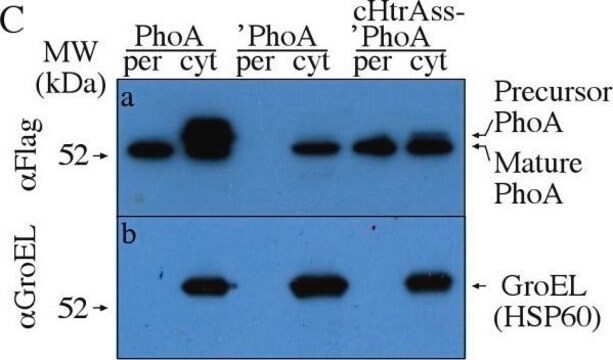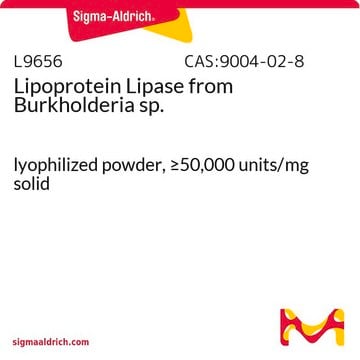A2179
Anti-Mouse IgG (Fab specific)–Alkaline Phosphatase antibody produced in goat
affinity isolated antibody, buffered aqueous solution
Sinonimo/i:
Goat Anti-Mouse IgG (Fab specific)–AP
About This Item
Prodotti consigliati
Origine biologica
goat
Coniugato
alkaline phosphatase conjugate
Forma dell’anticorpo
affinity isolated antibody
Tipo di anticorpo
secondary antibodies
Clone
polyclonal
Forma fisica
buffered aqueous solution
Reattività contro le specie
mouse
Non deve reagire con
horse, human, bovine
tecniche
direct ELISA: 1:40,000
immunohistochemistry (formalin-fixed, paraffin-embedded sections): 1:25
western blot (chemiluminescent): 1:80,000
Condizioni di spedizione
wet ice
Temperatura di conservazione
2-8°C
modifica post-traduzionali bersaglio
unmodified
Cerchi prodotti simili? Visita Guida al confronto tra prodotti
Descrizione generale
Immunogeno
Applicazioni
- western blotting
- immunoblotting
- enzyme linked immunosorbent assay (ELISA)
- immunohistochemistry
Azioni biochim/fisiol
Altre note
Stato fisico
Nota sulla preparazione
Esclusione di responsabilità
Not finding the right product?
Try our Motore di ricerca dei prodotti.
Codice della classe di stoccaggio
12 - Non Combustible Liquids
Classe di pericolosità dell'acqua (WGK)
WGK 2
Certificati d'analisi (COA)
Cerca il Certificati d'analisi (COA) digitando il numero di lotto/batch corrispondente. I numeri di lotto o di batch sono stampati sull'etichetta dei prodotti dopo la parola ‘Lotto’ o ‘Batch’.
Possiedi già questo prodotto?
I documenti relativi ai prodotti acquistati recentemente sono disponibili nell’Archivio dei documenti.
Il team dei nostri ricercatori vanta grande esperienza in tutte le aree della ricerca quali Life Science, scienza dei materiali, sintesi chimica, cromatografia, discipline analitiche, ecc..
Contatta l'Assistenza Tecnica.




![Tributyl[(methoxymethoxy)methyl]stannane AldrichCPR](/deepweb/assets/sigmaaldrich/product/structures/405/394/e2659ee0-7927-4ef9-b0bc-dc331065f409/640/e2659ee0-7927-4ef9-b0bc-dc331065f409.png)



